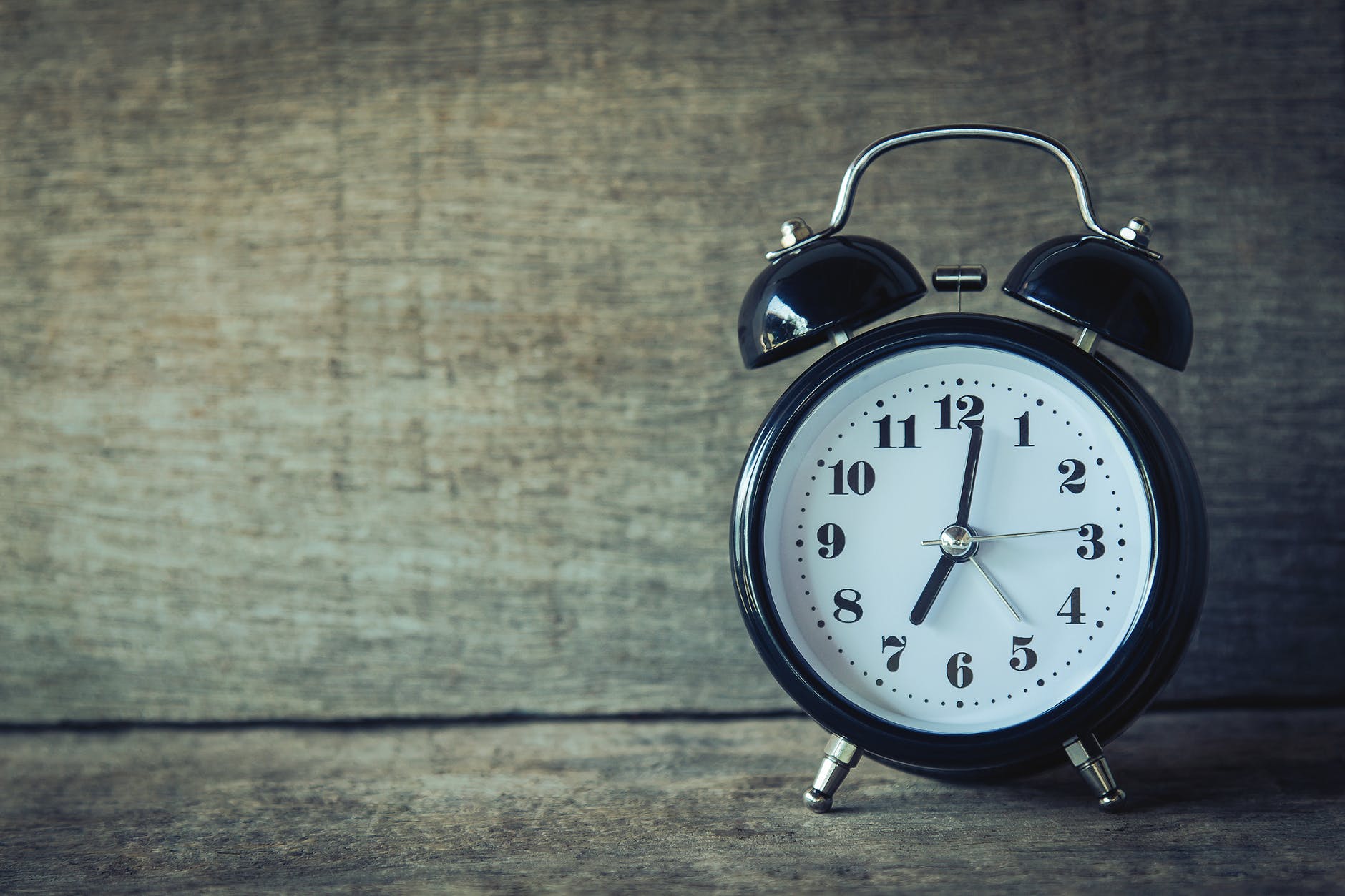
On the one hand technology has helped us become way more productive. It’s helped automate repetitive tasks and pinpoint when we’re most productive. There’s also an endless amount of information at our fingertips. And, it’s certainly enhanced how we communicate and collaborate with others.
On the other, it can be distracting and gets in the way of creative thinking. Even more worrisome, some believe that we’re straight-up addicted to technology. And, obviously, that’s not ideal for our mental and physical health.
If you think that I’m being hyperbolic here, just know that back in 2016, it was found that we devote more than 10 hours a day on screen time. Honestly, that shouldn’t be shocking since we’re glued to our computers, TVs, and phones.
Speaking of phones, RescueTime reports that on average, we spend 3 hours and 15 minutes on our phones. Additionally, we pick up our phones 58 times per day. However, because of an increase in WFH and socially distancing due to COVID-19, I would suspect that these figures are much higher.
Obviously, that’s going to disrupt our productivity. More troubling? Too much screen time can cause vision problems, impact our sleep, and encourage a more sedentary lifestyle. It can even lead to anxiety, stress, and depression. The reasons? We’re comparing ourselves to others on social media. And, we’re working too much since we’re always available.
Suffice to say, you need to reduce your screen time. And, that’s totally possible by implementing the following 10 strategies.
1. Track screen time and set time limits.
You’re probably thinking that there’s no way that you’re getting too much screen time. And, since you’re in denial, why would you want to limit your usage?
To avoid maintaining your ignorance is bliss mentality. Make the effort to track how much time you actually spend starring at that glorious blue light. Best of all? There are plenty of tools that will do this for you. And, because they run quietly in the background, you can just keep doing your normal routine.
For example, RescueTime monitors the sites and apps you frequently visit and for how long. TimeCamp, HubStaff, and Toggl are some other options you can use.
If you have an iPhone 12, just turn on the Screen Time function in the Settings app. Android users can do this through the Digital Wellbeing tools located within Settings.
Next, you can use this information and solutions to set time limits. For example, if you’ve found out that you’re spending too much time on Instagram, you can tell your phone to turn the app off after two hours of use.
You can also use this data to create a schedule. Let’s say that you don’t want to be interpreted between 8 am and 10 am since that’s when you’re most productive. You can then block apps and websites and this specific time.
2. Keep your phone out of the bedroom.
“Many of us use our phones as alarm clocks, meaning they are the last thing we see at night,” writes Alex Hern in The Guardian. It’s also “the first thing we see in the morning, perhaps even before our eyes are fully open.” That blue light exposure can impact the quality of our sleep. In fact, according to a 2017 study “social media use in the 30 minutes before bed is independently associated with disturbed sleep among young adults”.
Even if you aren’t scrolling through social media, that blue light exposure will also interfere with the quality of your sleep. Moreover, grabbing your phone when the alarm goes off means you aren’t just turning waking-up. You’re now laying there going through your inbox. As a result, you stay in bed longer than planned and get stressed out about the day.
The solution? Charge your phone in another room and avoid looking at screens at least an hour before bed. And, buy an alarm clock as well.
3. Establish tech-free zones.
You know, that last tip got me thinking. What other places should you designate as “tech-free zones?
In my opinion, the bathroom is on the top of the list. It’s unhygienic and just distracts you from doing your business and moving on. I’d also say the dining room or anywhere else you eat. Again, it’s gross and you can use this time more wisely like having quality time with your family or getting to know your team members better.
4. Leave your phone behind.
If you were to contact me during off-hours, like during the evening or weekends, it’s going to take hours for me to respond. You might not even hear from me until the next day or two.
I’m not ignoring you. It’s just that my phone isn’t by my side. For example, if decided to go on a hike my phone is probably in the car — or at least in silent mode and tucked away in my backpack. Even if I’m just kicking back and reading, the phone is nowhere near me.
For some people, this may frighten them because of FOMO. But, in all seriousness, if you gradually work your way up, you’ll notice that the world will keep spinning if you occasionally leave your phone behind.
5. Remove unnecessary apps.
When you have a couple of minutes, go through your phone and remove the unnecessary ones. For instance, if you only use social media for work, then uninstall them. The same goes for Netflix, Hulu, or any other app that tempts you into mindless usage.
6. Switch to grayscale.
Both iOS and Android allow you to turn your phone’s display grey. As a result, this will remove all the beautiful colors from your screen.
Why is this successful in curving your phone addiction? Because now they’ve lost their visual appeal.
For iPhone users, head into Settings. Next, select Accessibility > Display & Text Size > Color Filters. And, finally, toggle the switch on so that the Grayscale option appears.
Android users can do this by opening up the Setting panels and going into Digital Wellbeing. Chose Wind Down and you can either turn Grayscale on now or schedule it for a later time.
7. Schedule more face-to-face meetings.
I know that Zoom and video calls are all the rage. And, while they’ve been helpful, they also cause fatigue.
Instead, set up an old fashioned phone call. Or, even better, schedule a face-to-face meeting.
“In-person meetings provide a sense of intimacy, connection and empathy that is difficult to replicate via video,” Paul Axtell, corporate trainer and author of the book “Meetings Matter.” told The Washington Post. “It’s much easier to ask for attentive listening and presence, which creates the psychological safety that people need to sense in order to engage and participate fully.”
Even more impressive? Face-to-face requests are 34x more effective than emailed ones.
8. Take a look, it’s in a book.
Back when I was a wee lad, my parents purchased a really nice Encyclopedia Britannica set. I used these books from elementary to high school whenever I needed to look up a piece of information. For more in-depth research, the local library was already an excellent resource. Or, I would ask my elders to answer questions.
Believe it not, books and libraries are still in existence. I know it’s fast and convenient to use your phone or ask your smart device to answer a question. But, instead of relying solely on technology, seek out other ways to access information.
9. Don’t take as many pictures.
For most of us, this has become second-nature. Regardless if you’re at a birthday party, sporting event, concert, or traveling you take an excessive amount of pictures. Why is that a problem? Well, three different studies have found that photo-taking interferes with making new memories.
That’s not saying that you have to be anti-picture. It’s just that you don’t have to over snap. Instead, enjoy the moment by leaving your phone elsewhere.
10. Pick-up a new hobby.
I’ve been guilty of this in the past. It’s a Saturday afternoon and the weather isn’t nice enough to go outside. I’ve already cleaned the house and did a little work. But, now I’m getting bored. What do I do? Instinctively grab my phone or laptop and just start browsing.
To combat this, pick-up a new hobby that doesn’t require much screen time. Reading a book, any type of physical activity, or crafts are tech-free hobbies to engage with during downtime.

